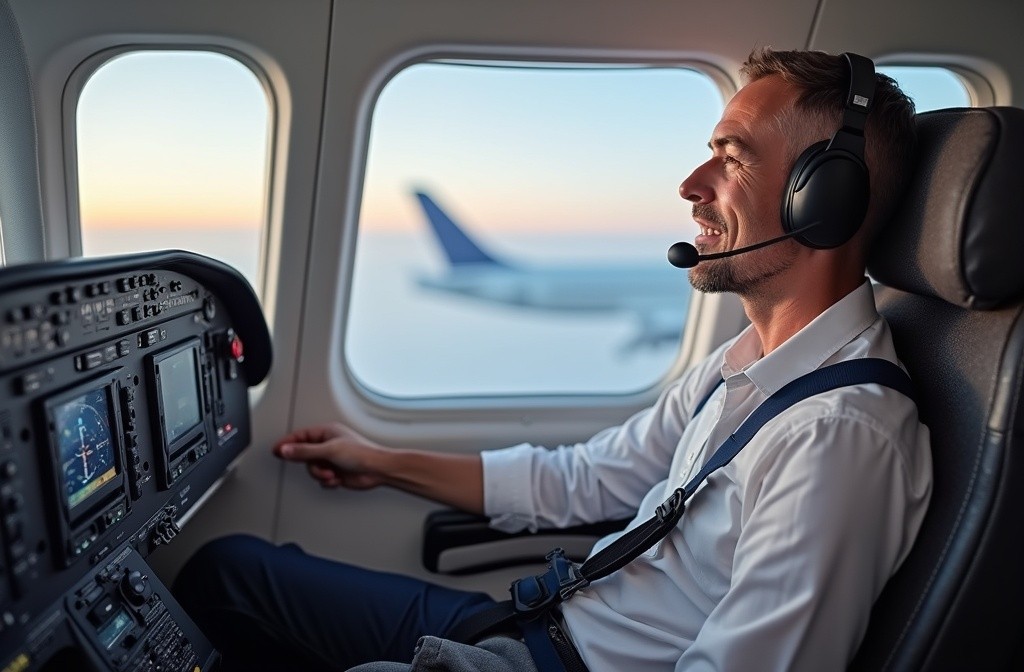Embarking on the path to becoming a commercial pilot is as exhilarating as it is demanding. It combines the wonder of flight with the precision and discipline of a challenging career. Discover the structured path, the necessary commitment, and the tangible sense of achievement found only in the cockpit.

The Path to the Skies: Building Your Foundation
Embarking on a career as a commercial pilot necessitates a solid foundation of education and training. For many, the journey begins by ensuring they meet the basic requirements to start flight training. Prospective pilots usually need a high school diploma, though further education in aviation or related sciences can be advantageous.
Fledgling pilots often start by enrolling in flight school or aviation programs that provide ground training and initial flight instruction. These programs are designed to prepare students for the Federal Aviation Administration (FAA) Private Pilot Certificate (PPC), a prerequisite before moving onto more advanced ratings. Choosing the right flight school, therefore, is crucial, as it can significantly influence one's learning experience and future career prospects.
While the journey may vary slightly depending on individual circumstances, age is often a consideration. The question of age frequently arises as prospective pilots ponder their future. Fortunately, resources like GoFly Online offer clarity on age-related concerns, encouraging those contemplating a mid-life career change to pursue their passion for flying.
Certificates and Qualifying Hours: Climbing the Aviation Ladder
After obtaining a Private Pilot Certificate, the next step in a pilot's career path is typically the Instrument Rating (IR), which allows pilots to fly in a range of weather conditions. Following this, pilots pursue a Commercial Pilot Certificate, which is obligatory for those wishing to be paid for their flight services.
The Commercial Pilot Certificate requires accumulating significant flight hours. This typically includes:
- A minimum of 250 hours of flight time, which varies depending on the type of training institution. Some institutions can reduce this requirement.
- A set number of cross-country and night flying hours to demonstrate proficiency in diverse flying conditions.
Each milestone is a test of a pilot's skill, determination, and ability to handle the growing demands of professional flight. To assist in navigating this complex but rewarding journey, programs such as those at Future Pilots provide structured training paths designed to transition students smoothly through each certification phase.
Furthermore, pilots aiming for a position at an airline will need to obtain the Airline Transport Pilot (ATP) certification, which requires a higher threshold of both flying hours and proficiency.
Financial Investment in Your Future: Understanding the Costs
Pursuing a career as a commercial pilot necessitates a significant financial investment. Understanding the costs involved is essential for effective planning and securing the necessary funding or financing. Costs can be influenced by several factors, including:
- Type of Flight School: The choice between part 141 or part 61 schools can impact costs, as part 141 schools typically offer more structured programs.
- Aircraft Rental Rates: Costs can vary based on the aircraft used for training.
- Geographical Location: Flight schools in different regions can have varying tuition rates due to factors such as fuel costs and local economy.
Prospective pilots should research and strategically plan to secure necessary funds. Scholarships, grants, and financial aid are available to ease the burden, along with loan programs specifically tailored to aspiring pilots.
For those curious about the lifestyle and financial aspects once training is complete, insights from recent graduates like those shared in Business Insider can provide a realistic glimpse into the financial realities faced by new commercial pilots.
Summary: Charting Your Aviation Career
The journey to becoming a commercial pilot, while extensive and financially demanding, offers unparalleled rewards for those passionate about flying. It involves laying a solid educational groundwork, progressing through advanced certifications, and addressing the financial aspects with strategic planning.
By understanding each phase from foundation building to acquiring necessary flight hours, aspiring pilots can better anticipate the demands of this career path and align their preparation accordingly. The sky is not the limit but rather the beginning of an exciting and fulfilling journey. With dedication and the right resources, navigating the clouds as a commercial pilot becomes not just a career, but a lifelong adventure.




